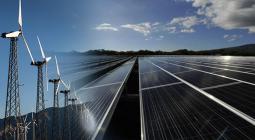Hydrogen FCEV trucks, buses and trains are a huge part of Korea and Japan's futures, and Australia has an export role.
South Korea is seemingly set to require commercial vehicles in the country – including trucks and construction equipment – to use hydrogen fuel-cell drivetrains by 2035.
The move is designed to counter “serious fine dust problems” in the country not helped by diesel emissions, according to The Korea Herald. The plan was apparently released by Transport Minister-nominee Choi Jeong-ho and Yoon Kwan-seok of the ruling Democratic Party of Korea.
According to the report, Choi also plans to commercialise hydrogen-powered trains after 2025 with the aim of completing R&D and trials 2022, with train station hubs to be supported by large hydrogen fuel-cell buses.
“Following the nomination process, the ministry will make a roadmap that includes detailed plans to achieve the goal,” Choi is reported to have said. The Industry Ministry also announced it would invest around 130 billion won ($182 million AUD) in 23 renewable energy projects over the next three to four years.
Korea is already a leader in the so-called ‘hydrogen economy’, with the Hyundai Group ahead of the curve, selling the Nexo fuel-cell electric vehicle (FCEV) the runs on pressurised hydrogen, and also producing hydrogen buses. Hyundai also makes trains, and both Hyundai and Samsung make heavy equipment.
Hyundai Motor Company last year affirmed at the ‘IAA Commercial Vehicles 2018’ in Hanover a Memorandum of Understanding (MOU) with Swiss hydrogen company H2 Energy (H2E) to provide 1000 heavy-duty fuel cell electric trucks and an adequate supply chain for renewable hydrogen.
In June last year, it was reported that the South Korean government and businesses would invest 2.6 trillion won ($3.2 billion AUD) out to 2023 in a public-private partnership to speed up the development of the country’s hydrogen fuel cell vehicle ecosystem.
The target is install 310 hydrogen stations by 2022 to supply 16,000 fuel cell vehicles. The funds will be spent on building plants for fuel cell vehicles and fuel cell stacks, manufacturing fuel cell buses and developing hydrogen storage systems.
The advantage of FCEV tech for trucks, buses, trains and other heavy vehicles is the fact that they can be refilled with pressurised hydrogen – which can be created with renewable sources and serve as useable storage – in a few minutes from a filler station.
And unlike a battery EV, and don’t need to lug around a few tons of batteries since they make their power onboard through chemical reactions, before emitting water. Having already ridden on a FCEV Hyundai bus that emits only drinkable water, cleans the air around it, and goes silently, I can attest to the tech’s veracity.
Thus FCEV widely seen as a replacement for today’s diesel vehicles, with battery EV tech to be left to smaller cars and SUVs. Especially since these sorts of vehicles regularly return to a central depot, where a filler can be located.
Alongside Korea, fellow regional power Japan is also investing in the hydrogen economy, and plans for the use of hydrogen as power generation.
The energy ministry has ambitious targets in the lead-up to the 2020 Olympics, with the city of Tokyo planning to deploy 100 hydrogen fuel cell buses (likely made by Toyota, which like Hyundai is heavily invested in the tech) during the games.
According to a report issued by Japan’s Ministerial Council on Renewable Energy, Hydrogen and Related Issues, the plan goes much further.
“The core of hydrogen use in the mobility sector is the diffusion of FCVs and hydrogen stations. Japan aims to increase the number of FCVs in Japan to 40,000 units by 2020, to 200,000 units by 2025, and to 800,000 units by 2030.,” the report says.
“Japan also aims to expand the number of hydrogen stations in Japan to 160 by FY2020 and to 320 by FY2025 and make hydrogen stations independent by the second half of the 2020s.”
This affects Australia greatly, since we have the renewable resources to make a lot of hydrogen for export. That’s why Australia’s Chief Scientist Alan Finkel is leading a National Hydrogen Strategy to map out a domestic and export hydrogen sector, with support from the COAG Energy Council, to be implemented from 2020.
The need was stated by the aforementioned Japanese government report:
“Hydrogen has favorable characteristics due to the fact that its use emits no carbon dioxide because it contains no carbon. It can be used as an energy carrier to store, carry, and in effect use renewable energy, due to its storability, portability and flexibility,” it said.
“Japan can take advantage of hydrogen technologies to use abundant renewable energy resources and unused energy resources from overseas that it has so far failed to use due to the fact that Japan is an island nation.”
CEO of the federally funded Australian Renewable Energy Agency (ARENA) Darren Miller added this week: “Australia holds a competitive advantage to play a global role in the emerging hydrogen export market due to our existing expertise and infrastructure”.
On this note, Australian companies such as Transit Systems, the operator of the London hydrogen bus fleet, are “actively looking” at the opportunity to deploy hydrogen buses in Australia too.
March 2019





